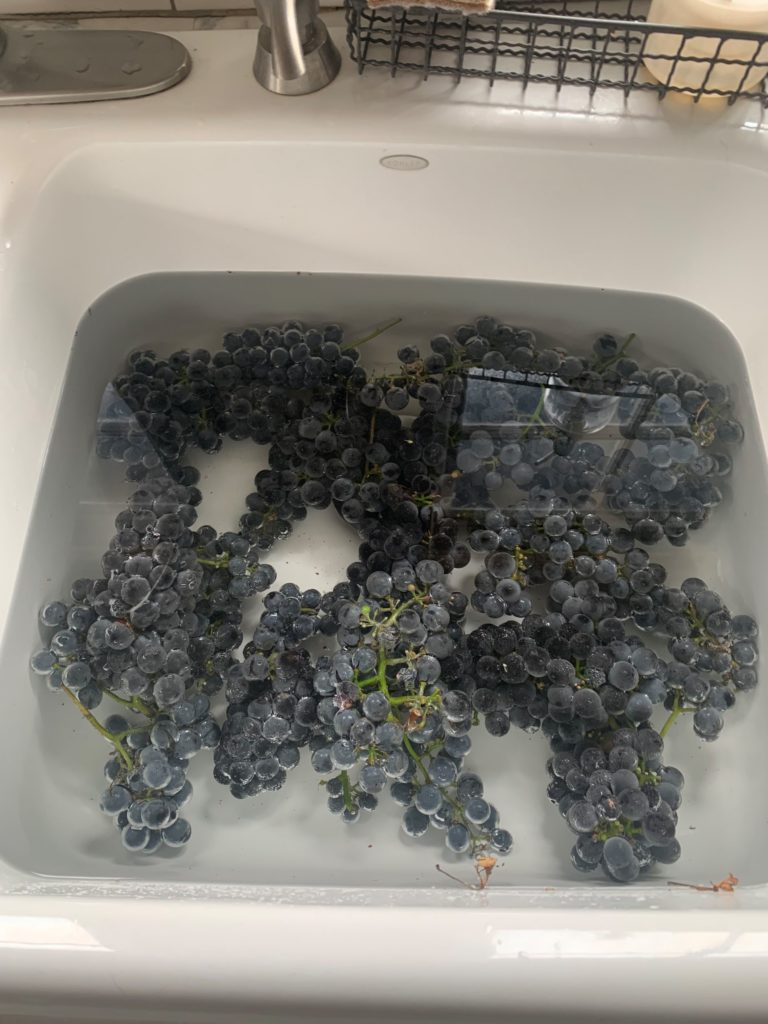This was not just a good year for apples but also for grapes. I got plenty of Concord grapes which best use is for juice. I have made wine with it before but the criticism for this wine is ‘grapy’. I concur. If I was to make wine with it, then I would probably use it for mulled wine or cooking. It is really not a sit down and have a glass situation.
If you recall last year, I attempted to use the apple press to squeeze the juice out. That worked, but it also required a lot of cleanup. Several years before, I used the Norpro Juicer. That worked as well but it sure packed the skins into the screen and required multiple stop and clean out operations. I stack rank the apple press over the Norpro but I want something better.
I did do some research on other options. Results I got that I am sort of loathe to try were to put the grapes in a blender or use a potato masher. I decided to try a third option. This was a light simmer.
The knock against this method is that heat potentially kills beneficial compounds found in the raw grape. If you were going to can the juice or make jelly, I don’t think you should give it a second thought. You have to heat those anyway to do those forms of preservation. My plan is really just to make juice to drink, but I am more interested in how easy and the mess factor that is involved rather that the nutrition nuances. Lets face it, if the option is less nutritious juice or letting them whither on the vine, you can guess where I come down on that decision.

Like all food processing, I start with cleaning and grading. I want to remove all of the split, moldy grapes as well as the insects that came around for the ride. Truthfully, if I am going to heat an pasteurize everything it probably really isn’t necessary but the thought of bird poop in my juice is quite a turn off.
I decided to de-stem all of my grapes. The reason that I did so was to give extra quality control. It allowed me to observe which grapes I was selecting. That being said, this took quite a bit of time. If I was truly looking for the simple button, then I would throw the whole cluster in the pot.
I turned the pot on medium low and set about to prepare dinner. Once the bottom layer started boiling I kept turning down the heat. I was trying to minimize the amount of heating, but I was doing other things so it was a low effort operation. I would say it was on the stove thirty minutes and probably simmering for twenty.
What you see in the picture was about a quarter of a 5 gallon bucket of grapes. That yielded about 1 quart of juice in this method. This took me about 30 minutes to prep and about another 30 minutes of filtration and clean-up. Still a lot of work.
I only juiced part of my grapes in this test. The next thing that I am going to do is try different levels of filtration. I used a hop bag to do this and it was too fine resulting in a lot of squeezing and manual manipulation. I think that it will be faster to do a two step filtration. An initial coarse filtration for the first press followed by a fine filtration for the finished juice. Of coarse, that will make more clean-up work, but I am hoping that the there is less clean-up time than squeezing time.
End Your Programming Routine: I am no juice connoisseur, but it tastes pretty good to me. My observation of the wine industry is that it takes a lot less care and handling with the grapes than I did for the juice. The reason is that it is too labor intensive to do what I did. That being said, don’t worry it will be fine. If you choose not to process your grapes, I wouldn’t blame you either.
Recent Comments